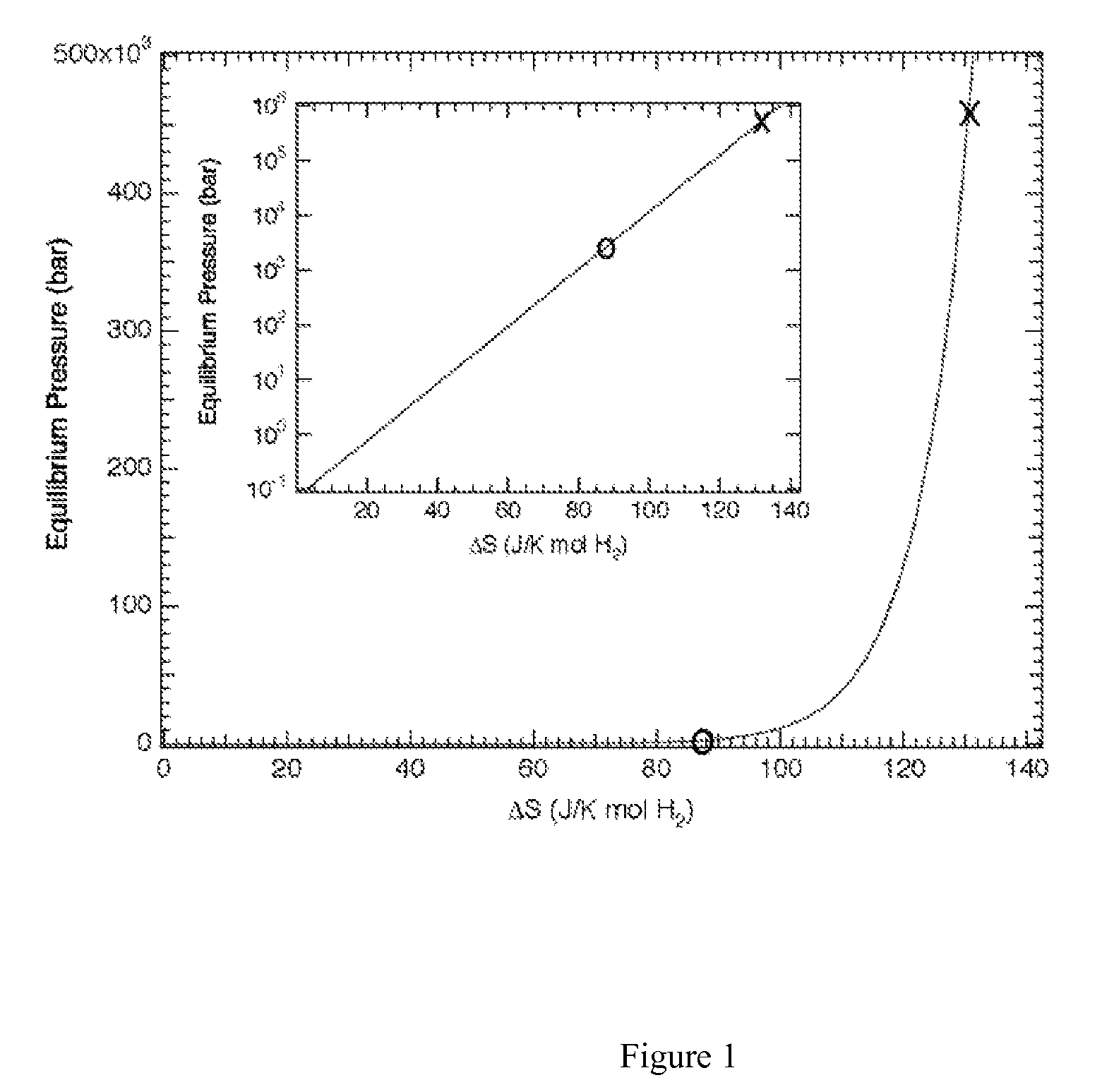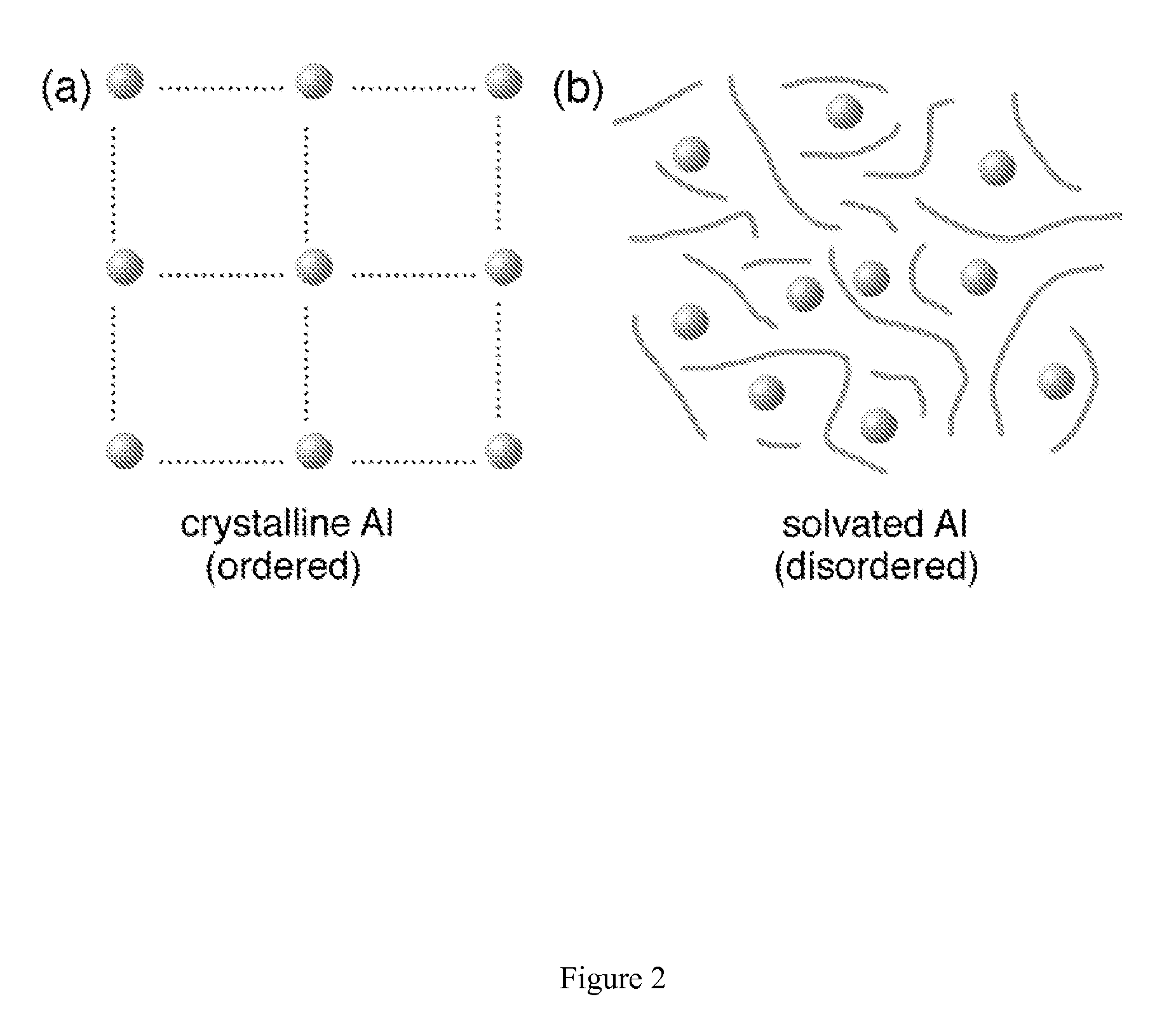Regeneration of aluminum hydride
a technology of aluminum hydride and regenerated aluminum, which is applied in the direction of metal hydrides, inorganic chemistry, chemistry apparatus and processes, etc., can solve the problems of insufficient automotive applications, inability to meet these goals, and expensive procedures for conventional organometallic synthesis
- Summary
- Abstract
- Description
- Claims
- Application Information
AI Technical Summary
Problems solved by technology
Method used
Image
Examples
example 1
[0032]Embodiments of the present invention present new methods for hydrogenation of aluminum or an aluminum species in the presence of a reactive solvent to form aluminum hydride (AlHx where x is greater than 0 and less or equal to 6) or an aluminum hydride adduct. The hydrogenation occurs by exposing the reactants to high-pressure hydrogen gas. The reactants include Al or an Al compound and a solvent. The methods may include:
[0033](1) Preparing solvated Al: Al is introduced into the solvent in the form of bulk powder, activated powder, nanostructured / nanoscale Al or as an aluminum halide (AlF3, AlCl3, AlBr3). Activated aluminum is prepared by the decomposition of previously prepared AlH3. In preferred embodiments, the solvent is selected from a number of non-aqueous solvents containing amine groups, amide groups, hydroxyl groups, or any of the oxygen-based solvents such as dibutyl ethers and ketones. Specific solvents may include, without limitation, diethyl ether, tetrahydrofuran ...
example 2
[0042]The hydrogenation of Al may also be assisted by a low concentration (≦4 mol %) of other additives such as catalysts or dopants. Such additives may include, but are not limited to elements from the 3d and 4d transition metal series. These additives may be introduced in the metallic state (e.g., Ti, Ni) or as compounds such as a metal salt (e.g., TiCl3). The purpose of the low concentration of additive is to enhance the total quantity of hydrogen absorbed and desorbed and to increase hydrogenation-dehydrogenation reaction rates.
example 3
[0043]In one example of use of additives, 15 / 4 g of Triethylenediamine (TEDA) was dissolved in 90 mL tetrahydrofuran (THF). Approximately 1.5 g of Al powder with 2 mol % Ti was added to this solution in a stirred high-pressure reactor. Hydrogen gas was added to the reactor (520 psia) and the solution was stirred at approximately 500 rpm. At room temperature (23 C.) hydrogenation occurred immediately and was approximately complete after 3 hours. In the absence of Ti to create Ti-activated Al metal, under similar reaction conditions there was no apparent hydrogenation even at approximately three-fold higher pressures.
[0044]During hydrogenation of the Ti-activated Al metal, a white / gray solid of TEDA-AlH3 precipitated out of solution. The solid reaction products were analyzed using powder X-ray diffraction. The analysis showed that no trace of the original Al or TEDA was present, confirming the reaction went to completion. Other experiments performed with dodecane in place of THF showe...
PUM
 Login to View More
Login to View More Abstract
Description
Claims
Application Information
 Login to View More
Login to View More - R&D
- Intellectual Property
- Life Sciences
- Materials
- Tech Scout
- Unparalleled Data Quality
- Higher Quality Content
- 60% Fewer Hallucinations
Browse by: Latest US Patents, China's latest patents, Technical Efficacy Thesaurus, Application Domain, Technology Topic, Popular Technical Reports.
© 2025 PatSnap. All rights reserved.Legal|Privacy policy|Modern Slavery Act Transparency Statement|Sitemap|About US| Contact US: help@patsnap.com



